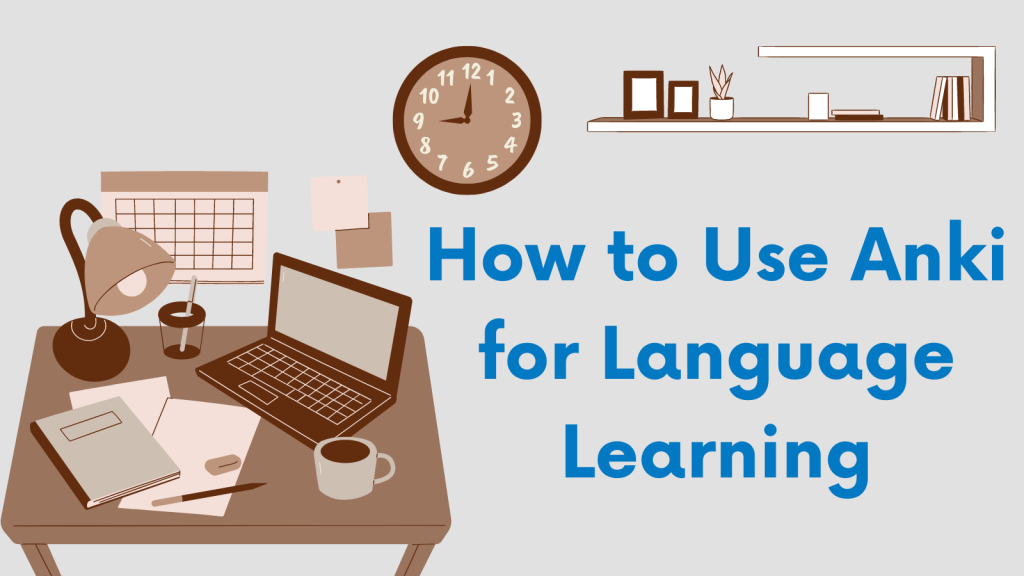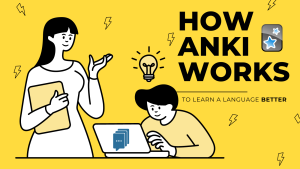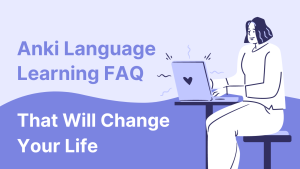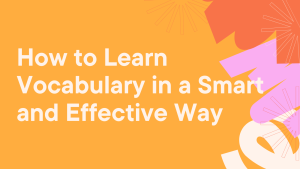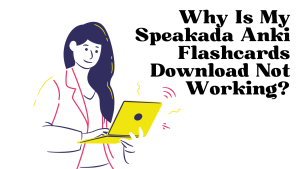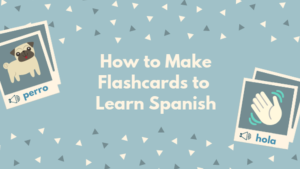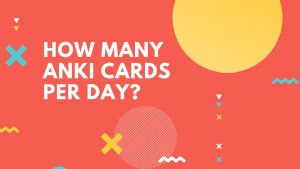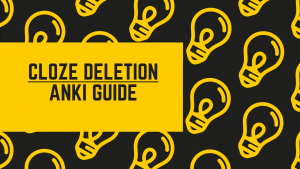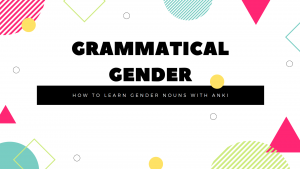How to Use Anki for Language Learning
Are you struggling to remember what you learn when studying languages? Are traditional methods boring and not working for you? Well, we have the perfect solution: Anki! But how to use Anki for language learning?
This amazing software and app have become incredibly popular in the language learning world. It offers a highly effective way to study and remember foreign languages.
But here’s the thing: learning how to use Anki can be overwhelming, especially if you’re new to it. Don’t worry though!
In this article, we’ll explore the exciting world of Anki and reveal its secrets for language learners. We’ll show you 10 different flashcard techniques that will transform your language learning experience.
Get ready to revolutionize your learning with Anki!
What is Anki and Why Does it Hold the Key to Language Mastery?
Anki is a special computer and phone program that helps us remember things better, especially when we’re learning a new language. It uses digital flashcards and a smart system to make our memory stronger.
Unlike regular studying, Anki makes us actively think and remember information by showing us flashcards at the right times. This way, we can remember important parts of a language like words, how to say them, and how sentences are formed. Anki is easy to use and really helpful for people who want to learn a language in a smart and effective way.
It may not be flashy like other language apps, but it has a secret weapon that sets it apart.
Anki uses a special algorithm to help you remember what you learn. It’s like an interactive tutor that keeps you engaged in the learning process. Say goodbye to passive learning methods like zoning out to music or watching TV. With Anki’s digital flashcards, you actively participate and retain information better.
But here’s the real kicker: Anki’s spaced repetition feature. It’s like having a study schedule that reminds you to review at just the right times. By recalling and reinforcing what you’ve learned through flashcards, you’ll supercharge your memory and language skills.
Whether you want to improve your pronunciation, expand your vocabulary, or tackle grammar, Anki has got you covered.
Supercharge Your Language Learning with Anki: 10 Awesome Ways to Master a New Language!
Now that we know how amazing Anki is for learning, let’s discover the incredible ways it can help us master a language.
Anki offers four default card types, but they’re not specifically tailored for language learners, so we’re not stopping there!
We’ll show you 10 fantastic ways to personalize your Anki flashcards for language learning.
Forget boring vocabulary lists—Anki goes beyond that! Whether you want to conquer alphabets, improve pronunciation, grasp grammar, or expand your vocabulary, Anki has got you covered. We’ll guide you through these ten exciting flashcard techniques that will take your language skills to new heights.
1. Learning the Alphabet
What You Will Learn: The alphabet, characters or letters of a foreign language.
When you’re learning a new language, one of the hurdles you’ll come across is the new alphabet or writing system that may be difficult to remember.
Many languages have different or new letters that we don’t have in English. These new letters can be quite daunting and confusing to your native language even when the letters look similar to the English language, but often represent certain sounds, or are pronounced differently to what you are used to.
Anki can actually help you to learn these flashcards that will focus on helping you to memorize the new alphabet.
What the Flashcard Should Look Like:
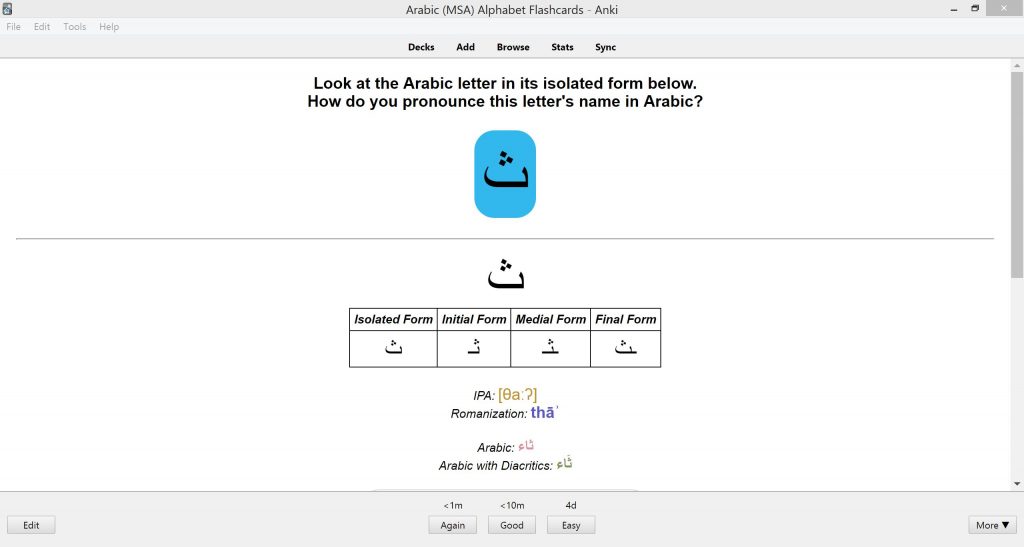
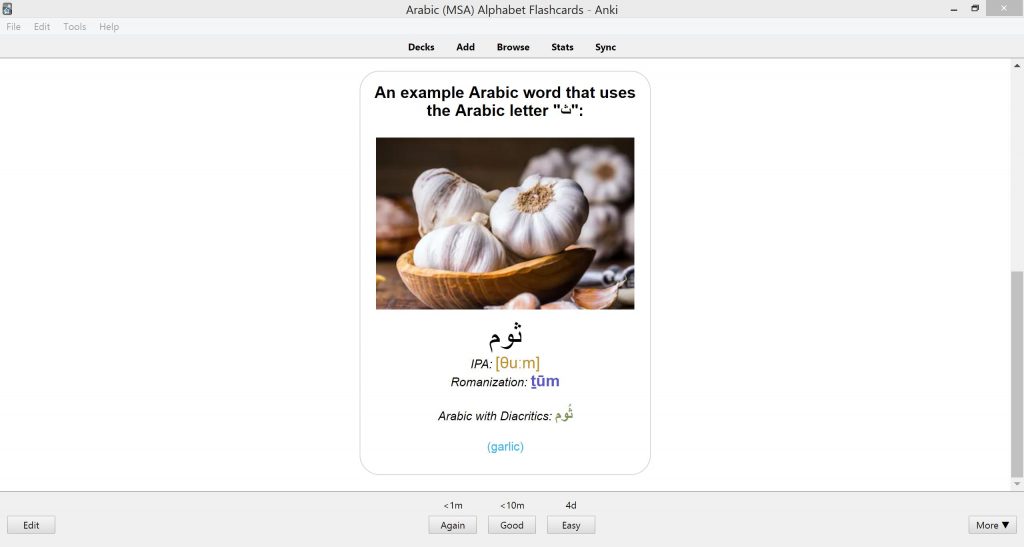
With these kinds of flashcards you can include the new letter or character in this new writing system of the foreign language. You can also have flashcards which have the audio sound of that letter or character.
There’s also the possibility to include an example word that includes those letters so that you can actually see the use of those words in the context of real words in that target language. You can also have audios for those as well, as well as tests to test you on whether you can write that letter when you hear the sound of that letter.
2. Learning the IPA to Improve Pronunciation
What You Will Learn: The IPA or International Phonetic Alphabet as it relates to the unique sounds of your target language.
Since different alphabets and writing systems can have their own systems and rules for how they represent sounds. It can also be a little confusing because in a language there are lots of exceptions to those rules.
For those who are unsure what the International Phonetic Alphabet is, the International Phonetic Alphabet or IPA is a way to standardize the sounds that are found in all languages by using this IPA. You can use this IPA to your advantage with Anki flashcards by creating IPA specific flashcards to help you learn how different combinations of letters and characters in that language form certain common sounds.
What the Flashcard Should Look Like:
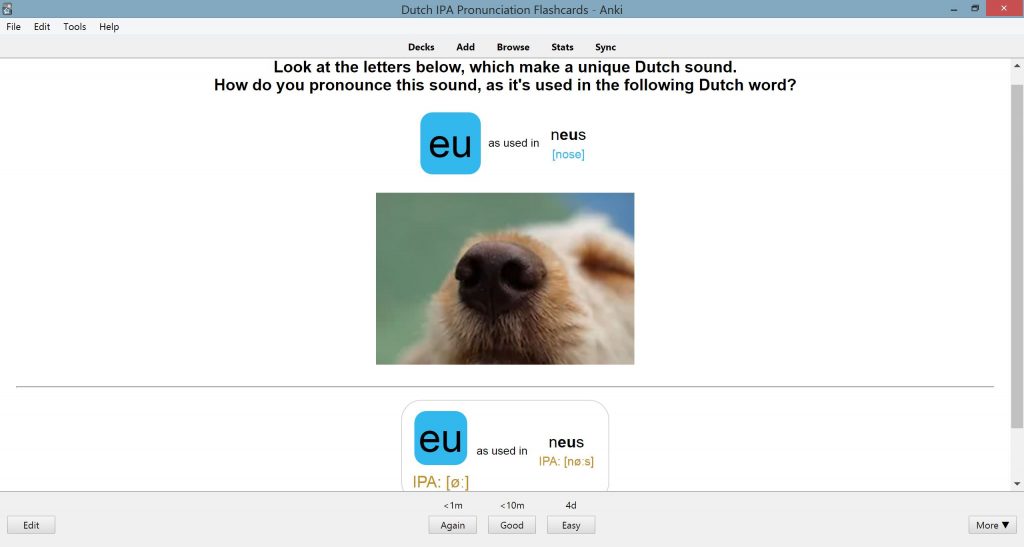
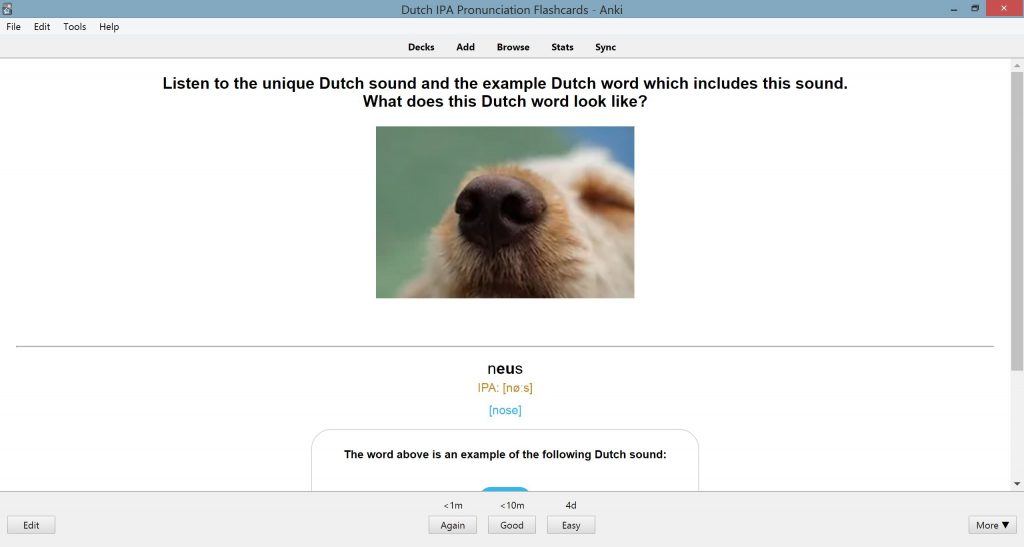
If you learn the alphabet or writing system alone in a certain language, you may actually leave out the way in which certain letters and characters create new and unique sounds when they are joined together. Learning the IPA can also help you memorize the way that these letter combinations create new sounds.
Similar to the normal alphabet flashcards you can create Anki flashcards that have the certain letter combinations or with the IPA sounds to test you on those, as well as examples of certain words that contain those IPA sounds.
3. Learning Pronunciation With Minimal Pairs
What You Will Learn: Be able to distinguish sounds in the target language using minimal pairs.
You can use Anki to improve your pronunciation and recognition of sounds in a foreign language by using minimal pair flashcards. This type of flashcard is much more special than the basic flashcard.
What the Flashcard Should Look Like:
With minimal pair flashcards, you can practice hearing and saying specific sounds in a foreign language. These flashcards show you two words on the front, and you’ll hear the audio of one of them. Your challenge is to match the sound to the correct word.
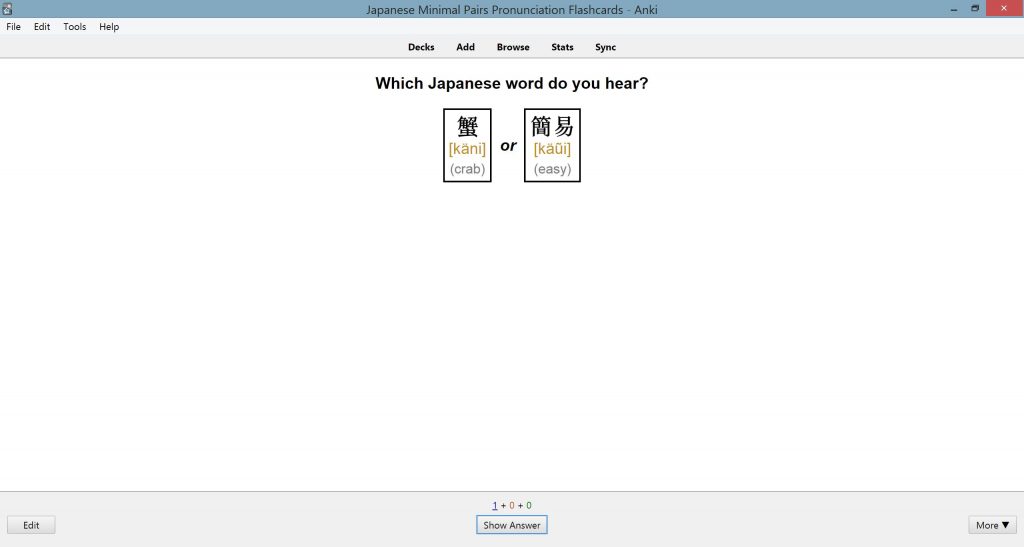
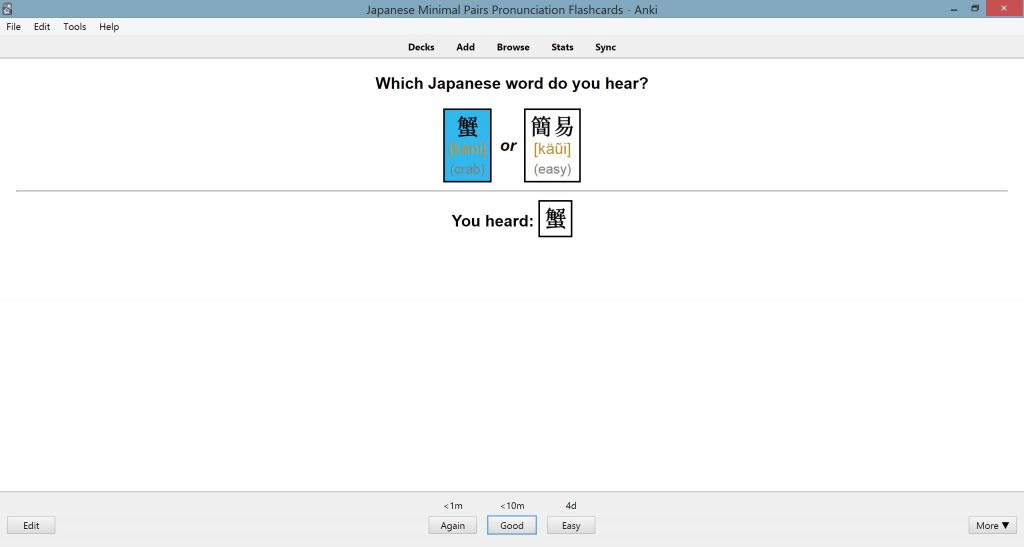
Anki’s special features make it possible to create these flashcards using coding and audio, which wouldn’t be possible with physical flashcards alone. It’s a powerful tool that takes your language learning to a whole new level!
4. Learning Common Phrases
What You Will Learn: Common phrases or sentences that are useful to learn for work, travel or life. This is a great way to start learning to speak properly in the target language.
While the last ways focused on flashcards to learn and improve pronunciation, you can also use Anki to help you learn vocabulary. You can use Anki to learn common phrases in your target language. What you can do is learn the most common phrases and sentences that you will need to survive in the foreign language, very basic phrases such as greetings, questions, requests, and responses.
What the Flashcard Should Look Like:
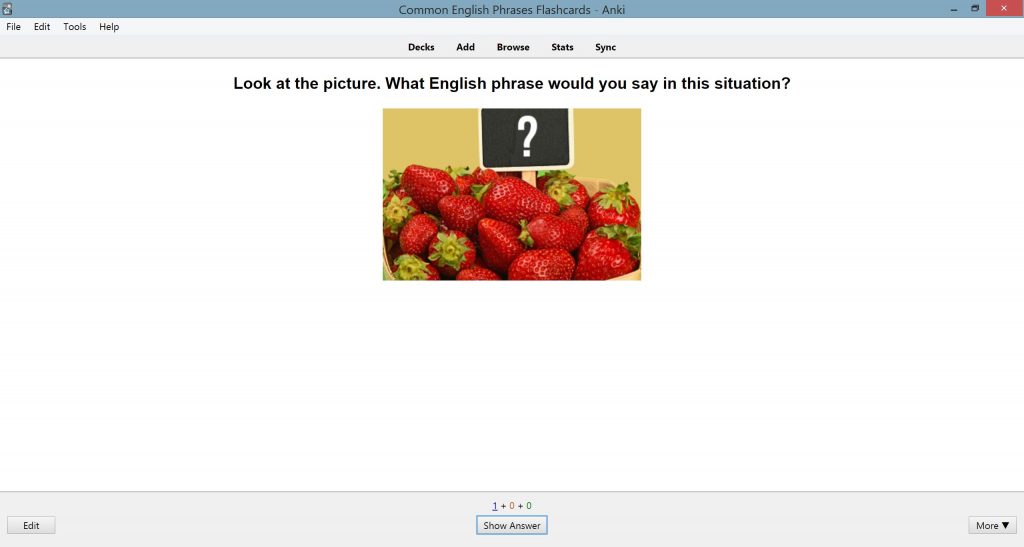
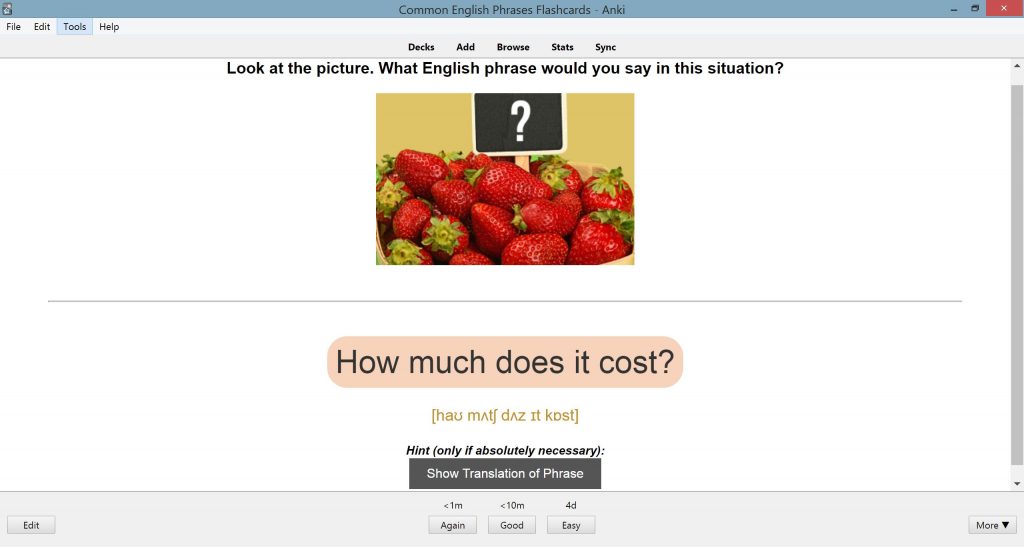
On one side, you can show the phrase and on the other side, you can show a picture or translation that corresponds to that phrase. And again, with Anki, you can include the audio recording of that phrase, so you can also practice how to hear it and pronounce it for yourself in a natural and native like way.
5. Learning Vocabulary With Text and Audio
What You Will Learn: Vocabulary and how to properly pronounce them with audio examples
Anki is also useful to learn words of a foreign language. The most basic and simple version with text and audio. With these cards, you will be focusing solely on learning certain vocabulary in the language.
What the Flashcard Should Look Like:
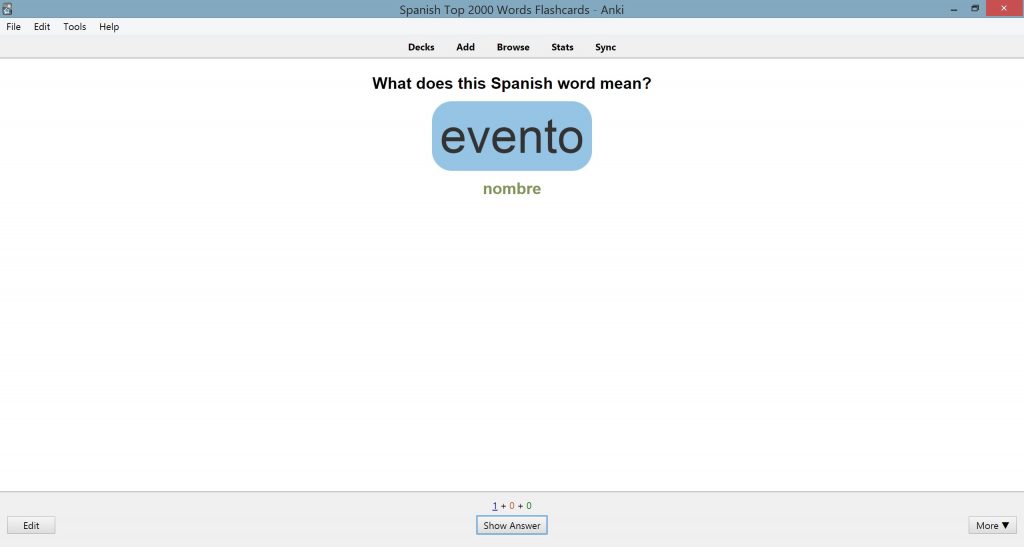
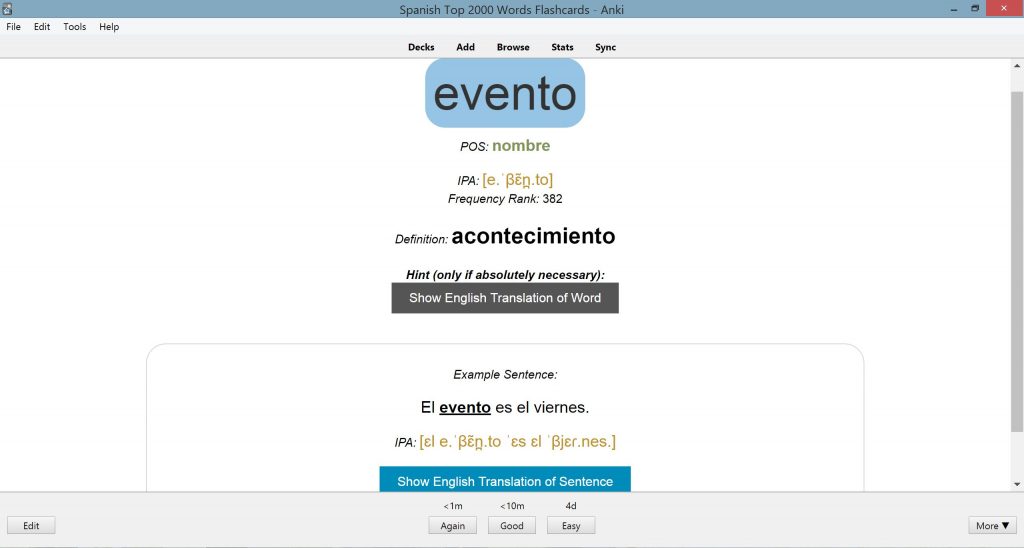
On the front, you’d have the new vocabulary and on the back of the card you can have the translation, or an explanation in your own words, or the definition of the new vocab word.
You can of course extend this to just being a basic vocabulary word card, by actually adding audios to this card. So you could get a recording of a native speaker actually pronouncing that word and that’ll help you with hearing the word and pronouncing the word rather than just relying solely on reading that word.
6. Learning Vocabulary Using Pictures
What You Will Learn: Vocabulary using visual cues and images
Most people when they study vocabulary word cards, they focus just on text. Anki is very versatile and you can learn using picture-based vocabulary cards. With Anki, you have the ability not only to add audio and text, but you can add images as well.
What the Flashcard Should Look Like:
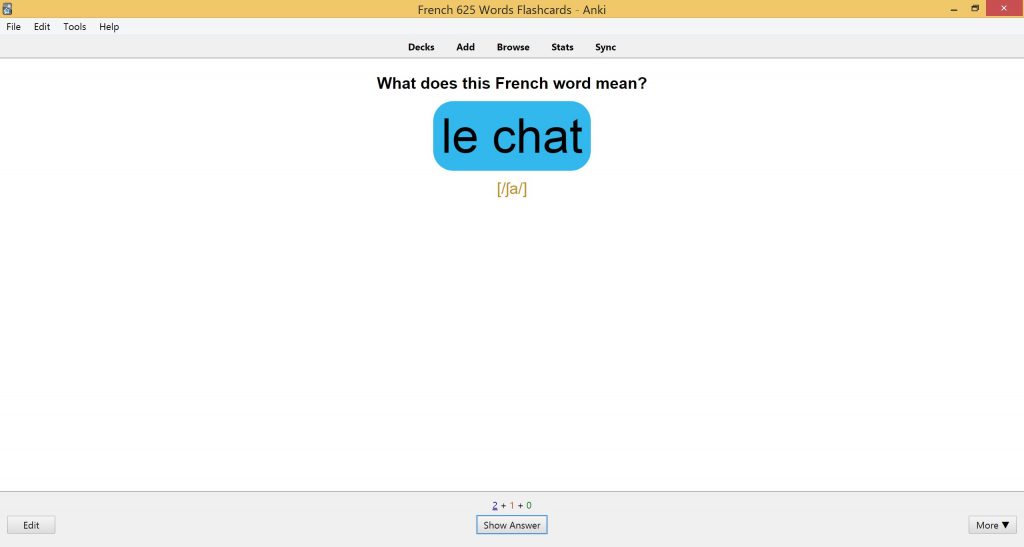
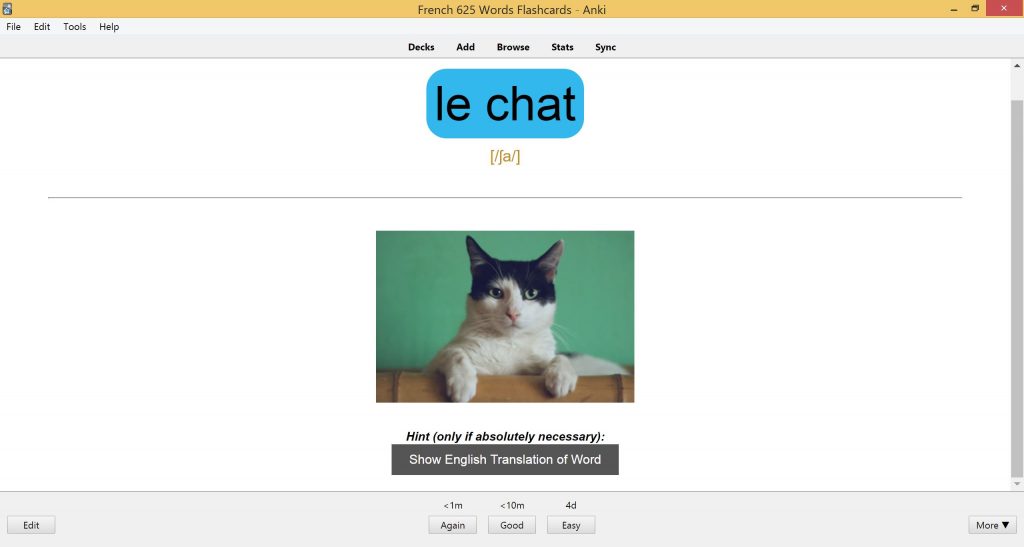
You would have the word on the front of the card and a picture of that word on the back. You can also flip it around, where you have the picture on the front of the card and the word on the back.
Now you have to make sure that the word is one that can easily be represented by a picture. But these kinds of flashcards are great because you don’t need to rely on translations in English in order to memorize and study this flashcard.
You can go directly from the concept to the target language word, thereby increasing your speed in thinking in that foreign language.
7. Learning Vocabulary and Grammar Using Sentence Examples
What You Will Learn: Vocabulary and grammar within sentence examples
Sentence based flashcards are used when you want to learn new vocabulary, but instead of using pictures or just the word or audio in isolation, the word is learned in a whole sentence.
You can also use sentence based flashcards to learn certain grammar points, where the grammar rules are learned within the context of example sentences.
These flashcards are really focused on the sentence with descriptions and definitions that are in English. These are also commonly known as bilingual sentence cards.
What the Flashcard Should Look Like:
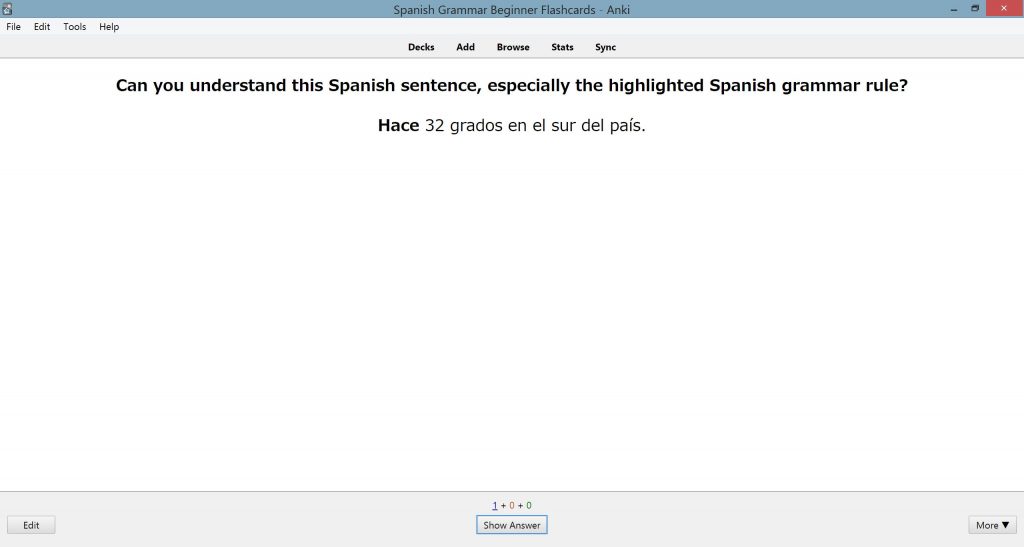
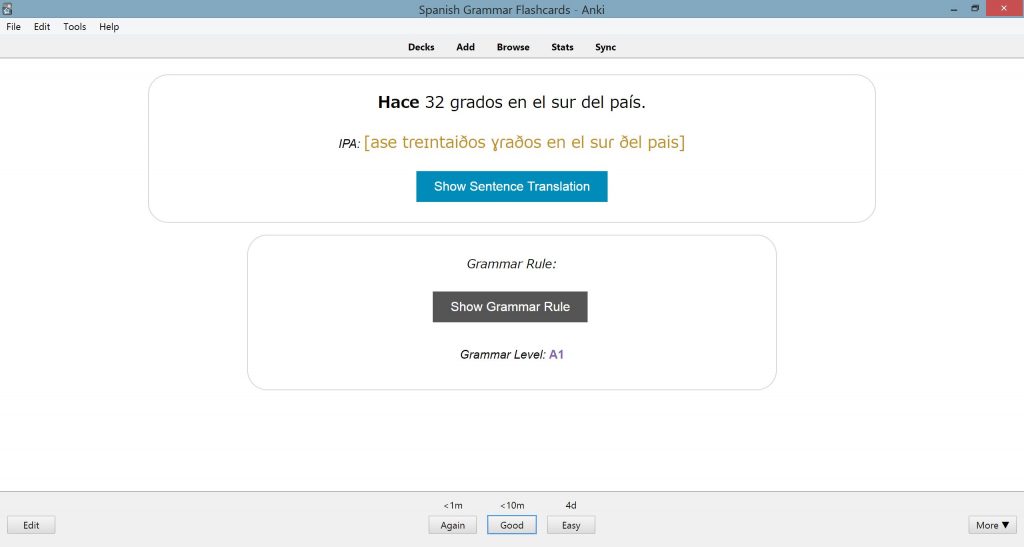
On the front what you’d have is the full sentence, which includes your target word or target grammar. Then on the back, you’d have a translation or definition of the target word, or you can include a description of the grammar rule. You can also include any other notes on the back.
These are great once you’re at the intermediate and advanced levels so that you can focus on learning words and grammar in context. You also get the added benefit of practicing more than just one word, since each sentence will have multiple words included within it.
8. Learning Using Monolingual Sentence Cards
What You Will Learn: If you want to learn vocabulary and grammar, but use the target language only on your flashcards and not to rely on your native language.
Using monolingual sentence cards on Anki is useful for individuals who would like to learn in one language. This is ideal for those who want to keep thinking and studying in the target language only. It is recommended to learners who are at the higher intermediate to advanced stages.
What the Flashcard Should Look Like:
Monolingual sentence flashcards are a special type of flashcard where you have a sentence on the front with a new vocabulary word you want to learn. On the back, you’ll find the word’s definition or grammar rule description in your target language .
What’s unique about these flashcards is that all the information is in the target language, without any English. This helps you practice thinking in the target language and reinforces your learning.
Monolingual sentence cards are especially helpful when you’re immersing yourself in native materials like books, movies, and newspapers. You can copy interesting sentences from these sources and add them to Anki to memorize both the sentences and the new words or new grammar points in a meaningful context. It’s a great way to boost your language skills!
9. Using Cloze Deletion Sentence Cards
What You Will Learn: Vocabulary or grammar within a sentence
This is a more advanced variation of the sentence cards, and it involves cloze deletion sentence cards. Anki has a range of features and tools and for language learners, you can use the cloze deletion feature. The cloze deletion feature allows you to blank out the target word that we don’t know on the front. The goal is to be able to try and memorize what that blanked out word is.
What the Flashcard Should Look Like:
The cloze deletion card is different from the other types of sentence cards where you’re showing the full sentence including your target word on the front of the card. Your goal with those other sentence cards is to just basically comprehend the total meaning of the sentence.
With cloze deletion sentence cards you’re not given the target word in that sentence, but you’re given the other elements of that sentence. So it’s the full sentence minus just one word or a small phrase. Your goal is to try and memorize what word fits there perfectly.
Cloze deletions can also help you test your knowledge of verb conjugations, like past tense or future tense, so cloze deletions can potentially help improve your grammar, too.
Cloze deletion flashcards can be useful if you want to practice specific words, but you need to be very clear on what that word should be within that sentence.
One problem with cloze deletion sentence cards, however, is that sometimes multiple different answers can actually be correct, but the back of the flashcard can’t know all of the possible correct answers.
There are multiple ways to express the same thing in a foreign language, but the cloze deletion cannot account for all of those different ways. This can be frustrating because you can’t always check if you’re correct or not.
10. Learning Using Audio Sentence Cards
What You Will Learn: Using audios to understand how to pronounce words and sentences in your target language.
The final type of flashcard that could be useful to help you learn languages with Anki is the audio sentence card.
What the Flashcard Should Look Like:
Audio sentence cards are a great way to improve your listening skills in a language. On the front of the card, you’ll hear a full sentence spoken out loud. Your goal is to understand all the words in that sentence and train your ears to catch them quickly.
One challenge in language learning is understanding natural spoken speech, especially when native speakers speak fast or blend words together. These audio sentence cards help you practice hearing and comprehending what people are saying.
On the back of the card, you can have the full text of the sentence for reference. By focusing on challenging sentences and audio samples, you’ll gradually improve your ability to understand spoken language not just on flashcards, but in real-life conversations too.
Revolutionize Your Language Learning Journey with Anki!
And that’s it! You now have 10 awesome ways to use Anki for language learning, each with a different type of flashcard. These techniques are specifically designed to help language learners like you. So go ahead and try them out to supercharge your language learning journey with Anki.
Now, it’s time for you to take action and supercharge your language learning journey with Anki. Here are the steps to get started:
- Download and install Anki on your computer or smartphone.
- Familiarize yourself with the basic features and functions of Anki.
- Begin by creating simple vocabulary flashcards, using either text or images.
- Explore different flashcard types, such as minimal pairs, sentence examples, or monolingual cards, to target specific language skills.
- Customize your flashcards to suit your learning style and preferences.
- Make use of audio sentence cards to improve your listening skills and comprehension.
- Set a regular study schedule and commit to reviewing your flashcards consistently.
- Take advantage of Anki’s spaced repetition algorithm to optimize your learning and retention.
- Incorporate native materials like books, movies, and newspapers into your flashcards for a more immersive learning experience.
- Continuously experiment and adapt your flashcard techniques to keep your language learning journey engaging and effective.
With Anki by your side, you have the power to revolutionize your language learning.
Don’t forget, at Speakada we specialize in ready-made Anki decks designed to make language learning easier and save you time. Our premium Anki decks are specifically designed for language learners, incorporating the diverse range of flashcard types mentioned earlier.
With our decks, you’ll have more time to focus on what really matters: mastering your target language. If you haven’t already, make sure to explore our Anki decks and see how they can supercharge your language learning journey.
